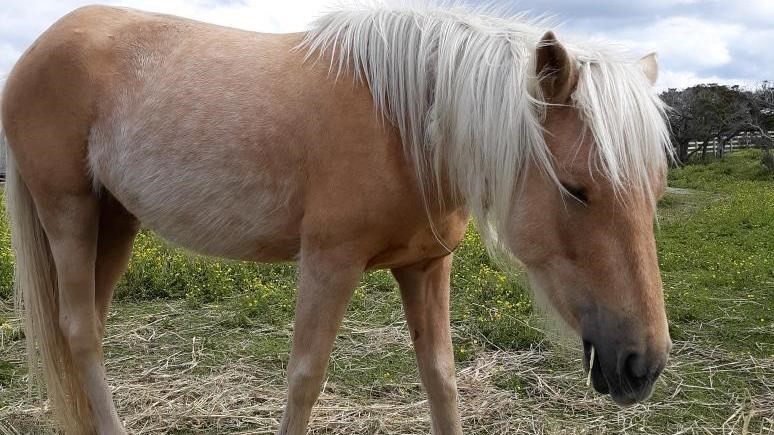Last updated: November 7, 2021
Place
Pony Pasture

Historical/Interpretive Information/Exhibits, Information, Parking - Auto, Parking - Bus/RV, Picnic Table, Restroom, Wheelchair Accessible
Ocracoke's "ponies" are not really ponies at all, but true horses descended from domesticated Spanish mustangs. Legend has it that these animals, also known as Banker horses, were left here by shipwrecked explorers in the 16th or 17th century. The free-ranging animals were permanently penned in 1959 to prevent them from over-grazing the island's vegetation, and to safeguard them from traffic after the highway was built in 1957.
Visitors can see the ponies from a wooden viewing platform that rises above the double wooden pasture fence, or by following a boardwalk about ¼-mile to a second raising viewing platform. There is a donation box (summer-only) to the left of the stairway, for those who wish to help support the care of these cultural icons. For those wishing to support the care during the winter months, please stop by the Ocracoke Island Visitor Center to make a donation in person.
From the parking lot, the beach is accessible from a boardwalk.
History of the Horses
Legend has it that the "Banker" horses of Ocracoke were left here by shipwrecked explorers in the 16th or 17th century. European ships commonly carried livestock to the "New World." If a ship ran aground near the coast, animals were thrown overboard to lighten the load so that the ship could be re-floated. The livestock were often left behind when the ship again set sail. Sir Richard Grenville's ship Tiger ran aground at Ocracoke in 1585. There is speculation that he may have unloaded Spanish mustangs on the island.
Horses have been documented on Ocracoke since the first European settlers came to stay in the 1730s. There have been as many as 300 horses on Ocracoke. While small and powerful, they are full-grown horses that are often called or referred to as "Banker" horses as their range included most of the Outer Banks. Physically, the Ocracoke horses are different from other horses-they have a different number of vertebrae and ribs as well as a distinct shape, posture, color, size, and weight that sets them apart.
The horses have played a major role in the island's history, serving residents as beasts of burden at work and play, in beach rides and races. When the early colonists settled Ocracoke, they used the ponies to help make life easier on the island by pulling carts to haul freight and fish. The US Life-saving Service used them for beach patrols and to haul equipment to shipwreck sites. The US Coast Guard kept a small band of "Banker" horses to patrol the beaches in World War II. As time progressed, the families that lived on the island claimed the horses, holding penning events in the summer. Riders would start early in the morning at the north end of the island and drive the horses into the village where holding pens had been constructed. Once the horses were in the pens, the villagers would sort out the horses and brand the new ones. Some horses would be broken for riding or sold, and the rest were turned loose to roam free again.
